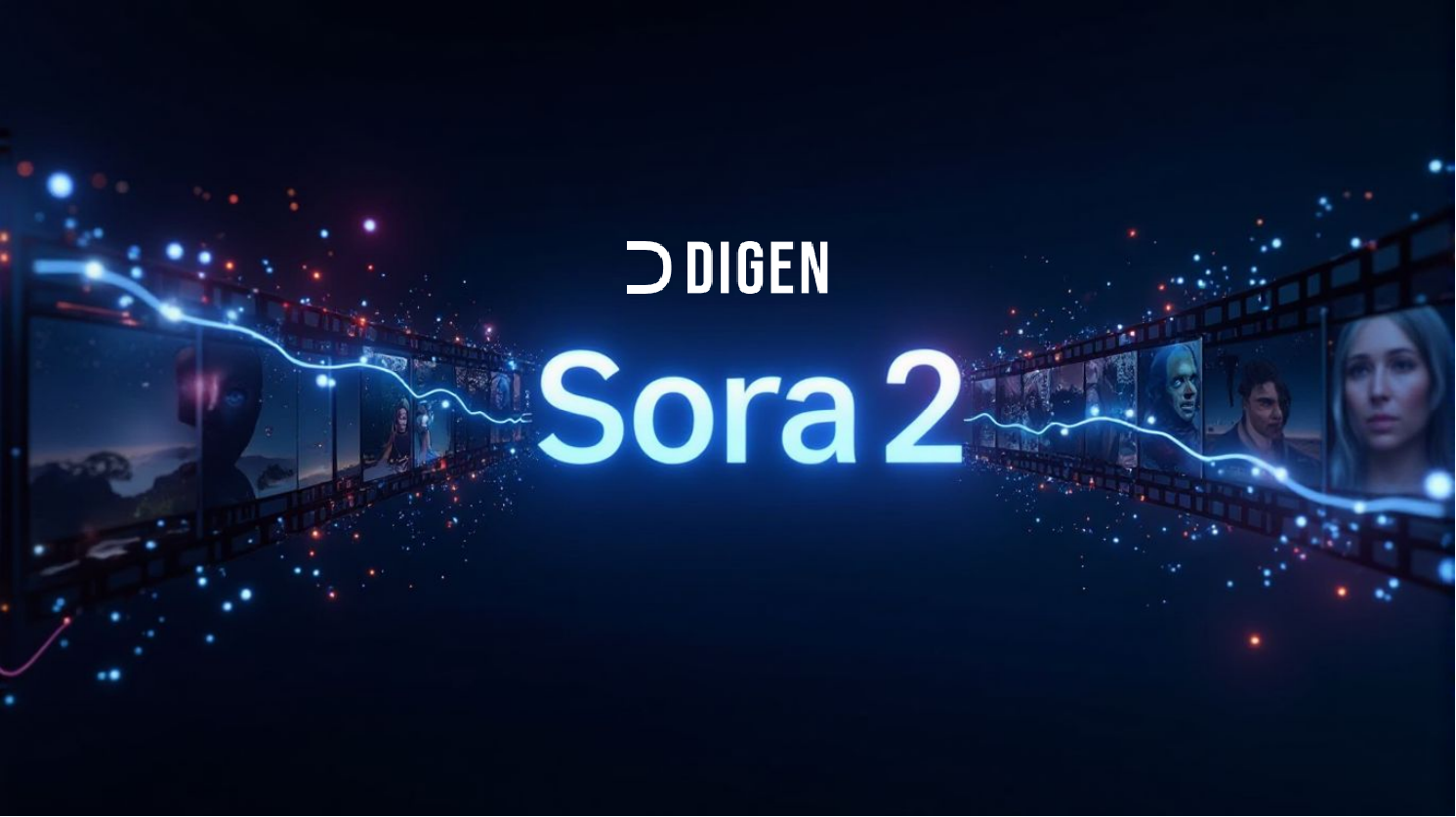10 Pro Tips to Make Digen Sora2 AI Videos Look More Realistic

Since its launch, Sora2 has revolutionized AI video generation with stunning visual fidelity and seamless audio-visual sync. Yet many creators notice a subtle but critical issue:
“The video is sharp and smooth—but it still feels ‘fake,’ like a flawless simulation missing the soul of real footage.”
Why?
AI generates content. Real video captures physics + cinematography + human intent.
- ✅ Zero watermarks on all exports
- ✅ No invite code—sign up and generate immediately
- ✅ Global availability—works from Brazil, India, Nigeria, Japan, and beyond
- ✅ Browser-based—no app download, no GPU required
To make Sora2 videos truly believable, you don’t need perfection—you need logically imperfect realism. Here are 10 battle-tested prompt engineering tips to dramatically increase authenticity in your Sora2 outputs:
1. Unify Lighting Logic: Time, Weather & Material Must Align
Common AI flaw: sun on the right, shadows on the left; wet ground with no reflections.
✅ Tip: Specify time of day (“golden hour”), light direction, weather, and reflective properties.
📌 Prompt Example:
“A city street at golden hour, sunlight from back-right, wet asphalt softly reflecting light. Light mist reduces distant contrast; glass windows catch warm reflections. Shadows align with source, tone warm and cinematic.”
2. Add Handheld Camera Imperfections
Perfect stability screams “AI.” Real handheld footage has micro-shakes, breathing motion, and start/stop inertia.
✅ Tip: Describe “slight vertical shake,” “focus drift during speech,” and “organic recovery.”
📌 Example:
“Handheld interview with subtle vertical micro-shake from operator’s breath. Focus briefly drifts, then smoothly returns—stable yet human.”
3. Simulate Real Depth of Field
Human vision isn’t uniformly sharp. Constant sharpness feels animated.
✅ Tip: Define lens (e.g., 50mm), aperture (f/2.0), and smooth rack focus over ~2 seconds.
📌 Example:
“50mm lens, f/2.0. Start focused on subject’s eyes; over 2 seconds, rack focus to distant bus sign. Foreground blurs naturally, bokeh highlights cat-eye shaped.”
4. Include Optical Imperfections
Real lenses have vignetting, chromatic aberration, lens flare, and sensor noise—these are “fingerprints of reality.”
✅ Tip: Allow 5–8% vignette, soft flare on bright sources, and fine grain in shadows (without losing detail).
📌 Example:
“Slight 5% vignette around corners, a soft lens flare from the top-left light source.Minor chromatic aberration on high-contrast edges, faint sensor noise in shadows but details preserved.Overall image feels optically authentic.”
5. Inject Micro-Movements
AI characters move too precisely. Real humans fumble, adjust, and react.
✅ Tip: Describe “disturbance → compensation → recovery” chains.
📌 Example:
“Man carrying coffee gets lightly bumped; cup shakes. He instinctively steadies it with his other hand. Ripples form, settle after 1 second.”
6. Enhance Material Realism
Avoid “plastic skin” or “flat textures.” Real materials show wear, pores, fibers, and light interaction.
✅ Tip: Specify “knit fiber texture,” “knee wear on denim,” “leather creases,” “subsurface scattering in hair.”
📌 Example:
“A young woman stands on a city street at 4 p.m., sunlight coming from the upper right at a 35° angle.She wears a light beige knitted sweater with visible fiber texture and soft wrinkles,paired with slightly worn denim jeans with subtle fading around the knees.A dark brown leather bag hangs on her shoulder, showing natural creases and specular highlights along the strap edges.Her skin reveals fine pores and a gentle oil sheen; sunlight diffuses softly through her hair, scattering warm light across her cheek.Behind her, a glass shop window reflects a faint blurred silhouette, with specular glints sliding as the camera moves.Color temperature is around 4800K, overall tone warm and natural, with convincing material-light interaction that feels truly photographed.”
7. Build Environmental Dynamics
Wind should move hair, fabric, dust, and light rays consistently.
✅ Tip: Define wind direction/speed and describe “layered hair movement,” “dust particles visible in sunbeams.”
📌 Example:
“gentle breeze blows left to right, layered hair swaying, shoulder strap swinging with slight delay.Floating dust particles catch the sunlight beams, moving consistently with the wind direction.”
8. Follow Cinematic Intent
Camera moves should guide attention—not float randomly.
✅ Tip: Use “eye-level (1.6m),” “foreground occlusion for depth,” and “push-in → hold → natural exit via blocking.”
📌 Example:
“Camera tracks right to left at eye level.Occasional passersby occlude the frame, adding depth.At 5 seconds, the shot settles on a medium close-up, ending with a natural occlusion.”
9. Add Micro-Narratives
Purposeless actions feel staged. Even simple cause-effect (“check watch → step back from splash → board bus”) builds credibility.
📌 Example:
“A girl waits at a bus stop on a cloudy day; her phone alerts, “bus in 2 minutes.”She checks her watch, looks up; as the bus splashes toward her, she steps back.After it stops, she glances behind to make sure she didn’t forget her umbrella, then boards.”
10. Embrace Documentary Flaws
Subtle film grain, rolling shutter skew, motion blur—these break the “AI uncanny valley.”
✅ Tip: In fast pans, add “slight skew,” “mild desaturation,” and “legible compression artifacts.”
📌 Example:
“During a fast pan, slight rolling-shutter skew appears.Fine film grain and minimal compression artifacts visible, but details remain legible.Colors are subtly desaturated for a documentary tone.”
Final Thought
Sora2’s power lies in its ability to simulate anything—but realism comes from constraints.
Give it physics, photographic grammar, and human imperfection.
Don’t chase perfection. Chase logically imperfect truth.
When your shadows align, your lens breathes, and the wind moves every strand—your AI video won’t just look real.
It will feel alive.
✅ Apply these techniques in Digen Sora2 today—and turn AI footage into authentic visual storytelling.





Comments ()